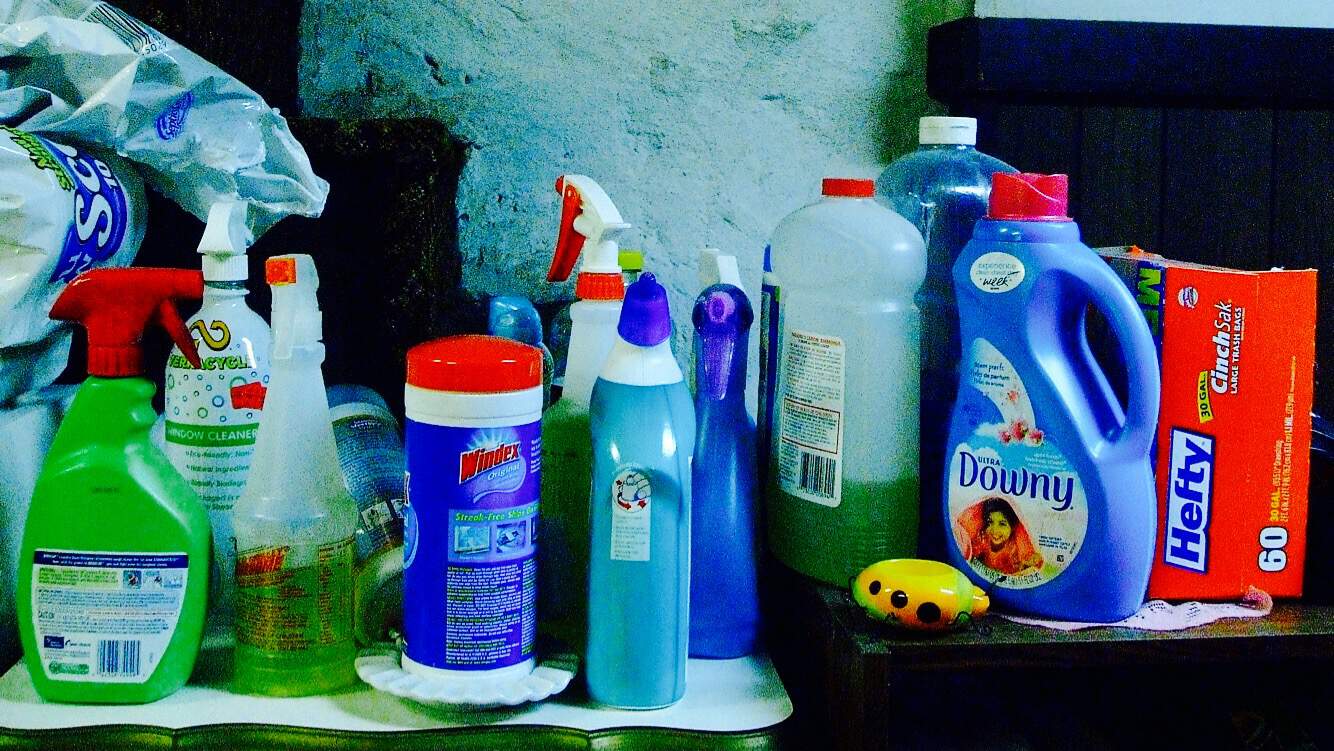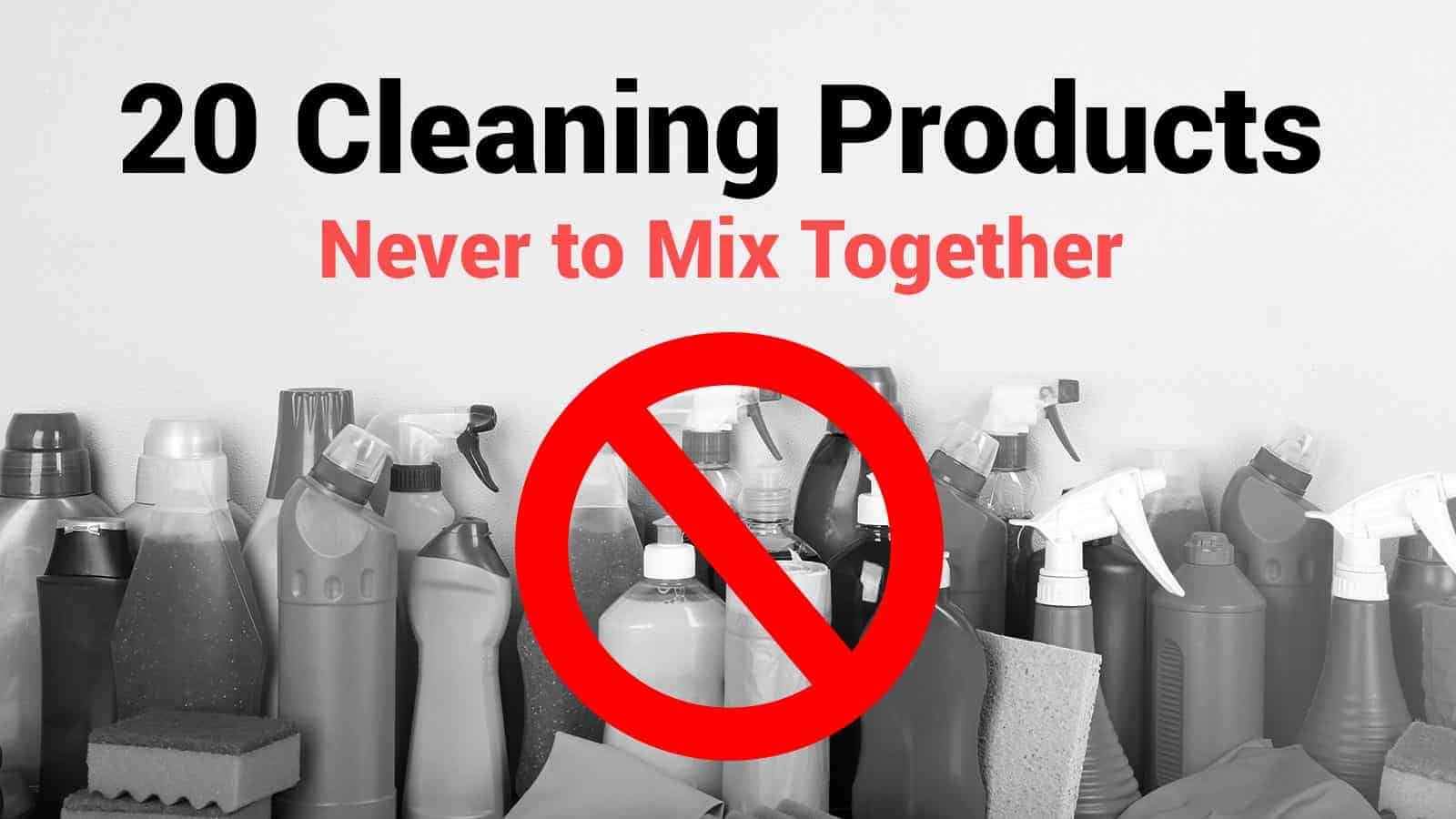Commercial cleaning products can trigger lung conditions, yet most people overlook this common cause.
“Cleaning products are not required to publish a list of ingredients on the bottle, even if they trigger skin rashes, asthma or are linked to cancer.” – Dr. Joseph Mercola
According to Dr. Joseph Mercola, “Household cleaning supplies are one of several products that may increase your exposure to toxins. In the pursuit of cleanliness and sparkling chrome, you may inadvertently increase exposure to indoor air pollution, inhalation risks, and contact absorption.”
Most people don’t think about their household cleaning supplies in terms of whether or not they’re healthy for you. Sure, many people know that they should not ingest cleaning supplies , or given to small children or pets. But a lot of people are unaware that the common household products that we use every day to keep our home clean are actually quite dangerous.
After all, we use those cleaning products under the assumption that they will actually make our homes safer. To most people, a clean house is a healthy house. While that may be true in some ways, in others, an overly clean house can mean that the people doing the cleaning are at risk for serious health issues.
The Organic Consumer Association states that, “In 2000, cleaning products were responsible for nearly 10% of all toxic exposures reported to U.S. Poison Control Centers, accounting for 206,636 calls.” Household cleaning products have chemicals in them that can lead to serious lung disease.
It’s important to know which cleaning products cause what problems. Thus, you can avoid them for more healthy and organic, chemical-free options. In addition, if you need expert help to clean your commercial space, check out the commercial cleaning services in Sandalfoot Cove, Florida. They have the best cleaners to assist your needs.
Here Are Some Common Household Products That Can Expose You To Diseases
Bleach
Many people know that bleach isn’t something to mess around with, but people continue to take the risk when it comes to using it for a clean house. “Bleach is one of the ingredients with links to lung disease, nervous system disorders, burns, and chemically induced pneumonia; mixing bleach with other cleaners may produce deadly gas,” adds Dr. Mercola.
Bleach may be excellent for disinfecting the problem areas of your home. However, studies prove that regularly breathing in bleach can actually increase people’s risk of developing COPD – chronic obstructive pulmonary disease.
Dr. Orianne Dumas (Ph.D.) from INSERM states, “We found that nurses who use disinfectants to clean surfaces on a regular basis – at least once a week – had a 22% increased risk of developing COPD. Earlier studies have found a link between asthma and exposure to cleaning products and disinfectants at home, such as bleach and sprays, so it is important to investigate this further.”
This is something you usually hear about in long-term smokers. You can mix a natural alternative to bleach with simply water, lemon juice, and hydrogen peroxide. This can help reduce the number of chemicals that one breathes in while using bleach.
Ammonia
According to this study, “Inhalation of highly hydrosoluble toxicants, like ammonia, can be associated with chronic lung diseases, which have been partially characterized.” Ammonia can be found in many common glass cleaners. It’s a common ingredient due to the nature of the chemical, in that it dries clear and doesn’t often leave streaks on the glass. Ammonia doesn’t have the same long-game that some of the other cleaning products have.
Those that get health issues from ammonia are going to feel it almost immediately. People who notice a reaction often have asthma or other lung problems. Strangely enough, a better alternative for window cleaning that has ammonia is actually … vodka! You can also use toothpaste for things like polishing silver, which is another ammonia based cleaner.
Chlorine
Most people don’t realize how much exposure they get to chlorine through their cleaning products. Chlorine is in toilet bowl cleaners, laundry whiteners, and products that can remove mildews. The problem with chlorine is that people can absorb the chemicals by breathing it in, as well as through their skin.
While the health effects of chlorine are relatively minor in comparison, they can be long-lasting. Chlorine can seriously disrupt one’s thyroid function. The healthy alternatives for chlorine are a mile long: baking soda and vinegar work well for toilet bowls and mildew, while vinegar and borax powder whiten clothes.
Sodium hydroxide
This is a chemical present in drain openers. Everyone deals with clogged sinks and drains now and then, and the easiest way through that problem is to get a chemical that eats right through the clog. Sodium hydroxide is extremely, extremely corrosive, which is why it can clear out clogged drains.
When it gets on the skin, sodium hydroxide can cause severe burns. And when someone breathes it in through the nose or mouth, it can cause discomfort, sore throats, or lung problems. Baking soda and vinegar down the drain is a healthier alternative to using a normal drain cleaner, and a mechanical snake tool can help get out nasty clogs.
Final thoughts
Most of us trust our household cleaners to keep our home safe – and many do! But that doesn’t mean we shouldn’t be wary of the chemicals that come in even the most common of household cleaners. You should examine even the most mainstream and popular cleaning products for chemicals that can cause health risks. The health risks that come with using household cleaners with dangerous chemicals may not always be immediate. However, they can be long-term and chronic if you don’t take proper precautions. Alternative cleaning solutions with natural ingredients and non-harmful chemicals can keep households safe and people healthy.


















